10 common medicinal plants in Mauritius
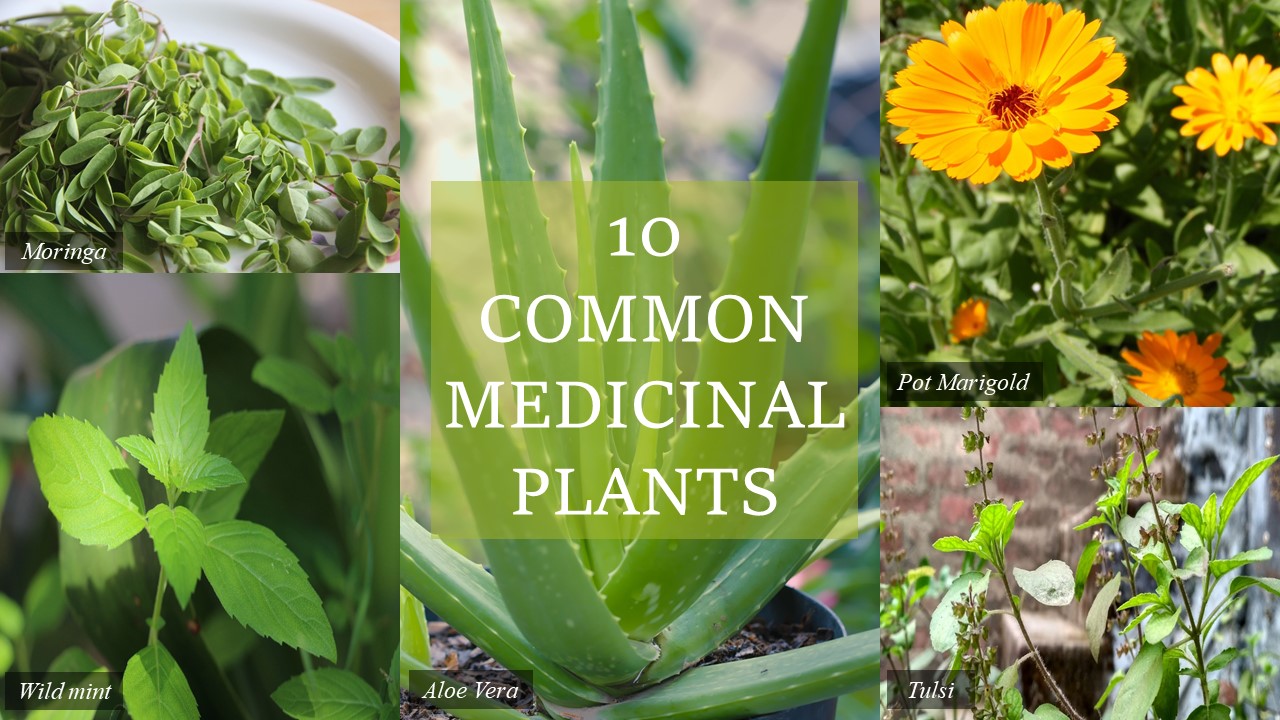
The content of this article is for educational purpose only and is not intended as medical advice. Please seek the help of a doctor before using any of the below-mentioned plants.
The International Union for Conservation of Nature and the World Wildlife Fund state that globally, we use between 50,000 to 80,000 flowering plant species as medicines. As it stands, medicinal plants (both on land and in the sea) are valuable sources of drugs. As research continues in this field, we discover more properties of common plants and/or new medicinal plants in secluded places.
To date, over 25% of prescribed medicines in developed countries come from wild plant species; in Europe alone, some 1300 medicinal plants are used [1]. In developing countries such as China, Kenya, Peru and Uruguay, up to 80% of people totally depend on medicinal plants for their healthcare.
Emergence of herbal medicine in Mauritius
In brief, when the early settlers established in Mauritius, they had limited choice when it came to medicine. This was due to the island’s geographical remoteness and lack of documentation. Under these circumstances, they used available plants through trial and error. Eventually, they transferred that knowledge to their families from generation to generation.
As more people came from Europe, Africa, Madagascar and India, they also brought with them their traditional medicinal knowledge and plants. In many situations, certain ethnic groups used native plants that looked similar to those of their homelands as medicine. Incidentally, they thus discovered the healing properties of native Mauritian plants.
The use of medicinal plants in Mauritius
Today, traditional medicinal plants still play an important role in the healthcare of the nation of Mauritius. For example, the older generations still use herbs a lot to treat common ailments like allergies, diarrhoea, headaches, stomach aches, nausea and tambave.
Yet, despite the use of many plant species as medicines, this is mostly based on traditional knowledge and herbalist information. They actually lack in-depth scientific validation of their therapeutic efficiency [2]. As a matter of fact, very few scientific studies have evaluated the curative potential of many of the native plants.
Medicinal properties of endemic plants
Statistically, out of the 443 medicinal plants recorded in Mauritius, 22% are endemics and used widely in herbal medication. For instance, people use infusions of the flowers of mandrinette (Hibiscus genevii) to cure kidney problems. Others still use seeds of the Mauritian stinkwood or Bois Puant (Foetidia mauritiana) to treat intestinal worm infections [2].
Interestingly, researchers have thoroughly studied the medicinal plants of Mauritius [3]. Yet, limited scientific information is available on their effectiveness, dosage, method of preparation and additive effects when mixed with other substances [2].
10 most commonly used and readily available medicinal plants in Mauritius
Basically, the most commonly used and readily available medicinal plants in Mauritius are Aloe vera, Ayapana, Baume du Perou, Citronella, wild mint, Moringa, Neem, Pissenli, Tulsi and Henna.
1. Aloe Vera
Made famous by its various applications in beauty and skincare products, Aloe vera (Aloe barbadensis miller) is a green succulent that grows well in arid regions. If truth be told, the medicinal uses of Aloe vera have been known for millennia and used by multiple civilizations including those in Egypt, Greece and China.
Basically, Aloe vera contains 75 active elements including sugars, vitamins, enzymes, lignin, salicylic acids, minerals and amino acids. Thus, Aloe vera is commonly used for healing purposes as it increases and changes the collagen content of wounds. It also protects the skin by reducing the release of certain chemicals thus preventing skin burns.
Moreover, Aloe vera also greatly boosts the immune system and is a powerful laxative. The plant actually contains 6 antiseptic agents that kill parasitic organisms in the body in addition to having antitumor properties.

2. Ayapana
Originating from South America, people subsequently planted Ayapana (Eupatorium triplinerve) in many regions around the world from Africa to the Caribbean Islands.
Very often, people just infuse the leaves of the Ayapana and drink it as a herbal tea due to its nice aroma. Yet, despite its common use in Ayurvedic medicine, there is no complete report on the chemical constituents of the herb. We mostly use Ayapana to treat liver conditions, bacterial and fungal infections, relieve liver pain and boost the immune system. Sometimes, people also use it to heal ulcers and haemorrhages.
3. Baume du Perou
Baume du Perou, commonly called Variegated Mint leaf, grows in the warm tropical regions across Africa to Australia. As it is, people in different countries use it differently. For example, South Africans use it in landscaping while people in mainland Africa use it to cure ailments.
As for Mauritius, the Baume du Perou species that grows here is the Plectranthus madagascariensis. The plant has a number of biologically active compounds that makes it worth studying. Essentially, people use it to treat mild bacterial and fungal infections, counter parasites like worms, protect against insects and inhibit the formation of tumours.
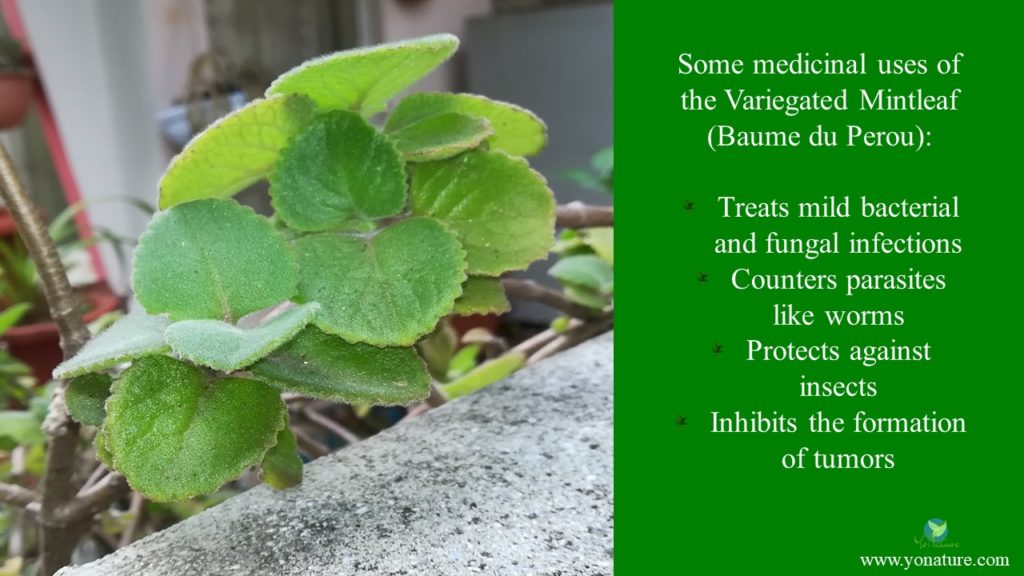
People infuse the leaves and take it with honey to treat flu
4. Citronella
Loved for its aroma, people cultivate the Citronella grass (Cymbopogon nardus) mainly for its essential oils. We then use the oils to make perfumes, soaps and to flavour dishes.
This grass grows mainly in tropical and sub-tropical regions and where there is a good distribution of rainfall. The essential oils of the leaves of Citronella have several biological properties. However, one of its most widespread use is in insect repellants.
In general, we use citronella to treat fever, parasitic infections, digestive and menstrual problems. Some people also drink infusions of the leaves to decrease anxiety while massages with its oil relieves muscle and joint pains.
5. Wild mint
Mentha longifolia or commonly called the wild mint is a plant that grows widely across Africa, Australia, the Mediterranean and Europe. Used in traditional medicine since ages, the main active ingredient in the wild mint is the essential oil component, menthol.
Researchers have studied the wild mint extensively. As such, its biological effects and chemical compounds are well-known. Generally, all parts of the plant, from leaves to bark, have traditional medicinal uses. These include treating parasitic infections, curing gastrointestinal and respiratory problems, boosting the immune system, healing wounds and reducing fever.
Sometimes, people also use it as an aphrodisiac.
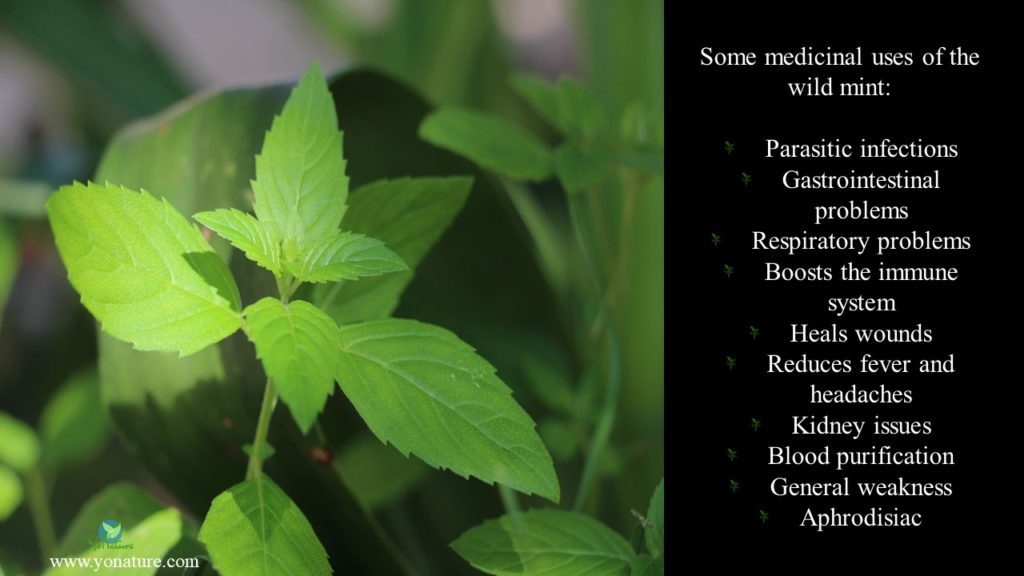
6. Moringa
Moringa oleifera or commonly called Brede Mouroum in Mauritius and even nicknamed the Miracle Tree by others is a fast-growing and drought-resistant tree. It originates from India and commonly grows in the tropics and sub-tropics.
The Egyptians, Greeks and Romans used moringa ages ago for its health benefits. As it is, moringa can cure and heal some 300 diseases!
Basically, almost all parts of the tree contain minerals, proteins, vitamins and phenolic acids. As a result, moringa is excellent to boost the immune system, treat minor flu, headaches, scurvy, eye and ear infections, reduce cholesterol levels, cure diarrhoea, treat liver and spleen issues, bone and joint pains, cramps, gout, anaemia and sexually transmitted diseases.
Though research is ongoing on moringa, it is also important to isolate individual compounds and verify their healing claims.
7. Neem
Widely used in Ayurvedic, Chinese and Unani medicinal folklore, the Neem tree grows in Asia as well as many other tropical and sub-tropical countries. Neem (Azadirachta indica), also called lila de perse or lila perse in Mauritius, has various health benefits as it is a rich source of antioxidants.
In fact, the leaves contain the most important active compounds though scientists have also studied the bark extracts, flowers and fruits. In the main, neem can treat a number of bacterial and fungal infections, prevent inflammations and arthritis, lower blood sugar levels, heal wounds, treat malaria, ulcers and inhibit tumour activities.

8. Pissenli
The pot marigold (Calendula officinalis) or Pissenli as called in Mauritius, grows extensively around the world, from the United States, Europe to Africa. The medicinal properties of the pot marigold exist in Ayurvedic and Unani traditional therapeutic systems.
In fact, researchers take note of various chemicals in the plant: steroids, lipids, carotenoids, carbohydrates and phenolic compounds.
The orange flowers of the pot marigold are also rich sources of carotenoids. Medicinal uses of the pot marigold include treating skin disorders, tambave, eczema, inflammations, kidney problems, gastrointestinal ulcers, poor eyesight, sore throat, insomnia, snake bites, menstrual irregularities, jaundice and varicose veins.
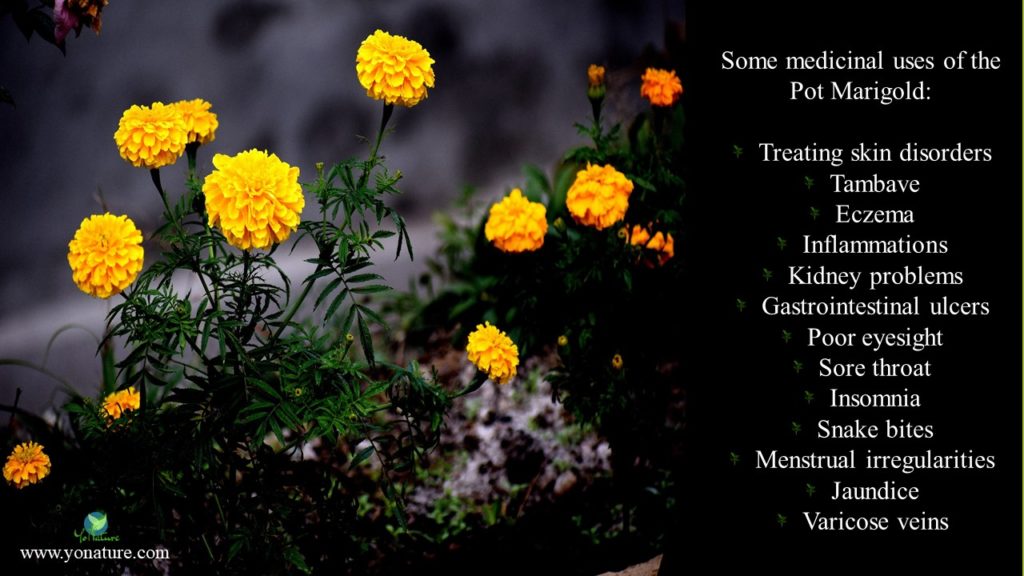
9. Tulsi
Tulsi (Ocimum tenuiflorum) is quite famous for its healing and therapeutic properties. Indians also call it the Queen of herbs, ‘The Incomparable One’ (Sanskrit meaning of Tulsi) and the Holy Basil. Generally, the plant grows in various parts of the tropics and has been used for thousands of years in Ayurvedic and Unani medicinal systems.
Interestingly, the chemical composition of the Tulsi plant is quite complex with a high number of active compounds and nutrients. Consequently, it has a wide range of applications from decreasing blood sugar levels, providing cardio-protective effects to killing microbes that cause infections. Tulsi also has anti-inflammatory and anticancer properties.
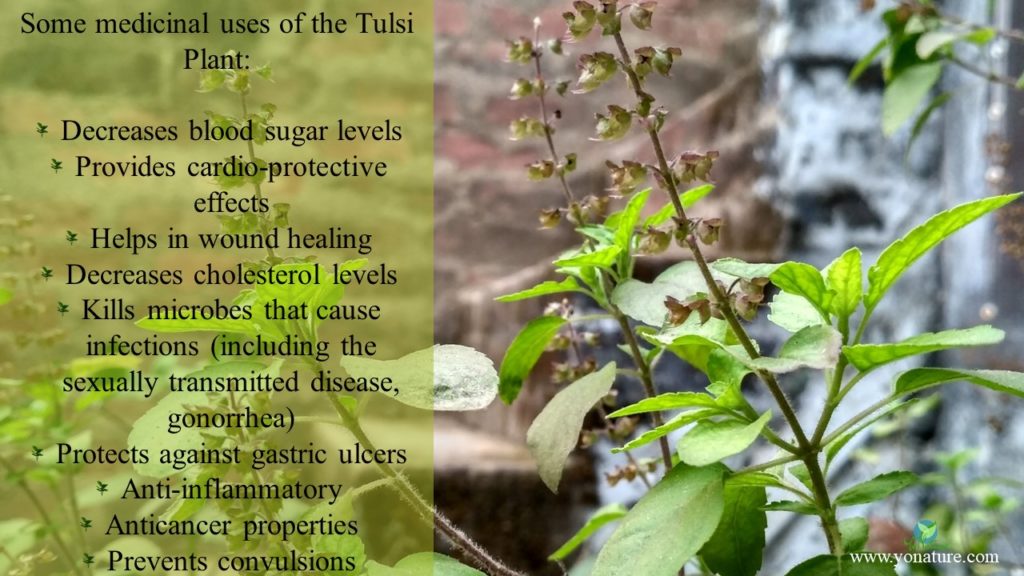
Photo by Priyanshu Katiyar on Pexels
10. Henna
The Henna plant (Lawsonia inermis) or Mehendi is a small tree that is famous for its nail treating properties. Yet the plant has significant pharmacological properties that are often overlooked. Grown in various countries in the tropics from Africa to Australia, Henna is an important medicinal plant in Ayurvedic therapy. Almost all parts of the plant including the leaves, flowers, seeds, bark and roots are used in treatment.
Medicinal uses of Henna, in general, include alleviating jaundice, treating smallpox and skin infections, healing wounds, treating liver disorders and curing involuntary and excessive ejaculation.

Photo by irfan ahamed from Pexels
References
- Chen, S.L., Yu, H., Luo, H.M., Wu, Q., Li, C.F. and Steinmetz, A., 2016. Conservation and sustainable use of medicinal plants: problems, progress, and prospects. Chinese medicine, 11(1), p.37.
- Rummun, N., Neergheen-Bhujun, V.S., Pynee, K.B., Baider, C. and Bahorun, T., 2017. role of endemic plants in Mauritian folkloric medicine-Therapeutic efficacy or placebo effect?. Journal of ethnopharmacology.

Where to get neem plant.
is there the flower dronpushpi in mauritius please. thanks a lot
Hello I find the article extremely interesting .. can someone help me with je scientific name of pyonden plz ? It will be for an art project for a student .. thank you
Hello there. May I please know where nettle plant can be fond in Mauritius? Thanks.
Hi, many people grow it in their gardens, you can ask around, or you can get it at the Central Market in Port Louis, most people know it by its french name though ‘Ortie’, maybe you’ll have better luck with that 🙂
Hello
I would like to know if ‘Lapsent’ and Chamomille plants are available.
Pingback: 10 best easy-to-grow plants for new gardeners - Yo Nature
Hello, I am looking for Sage herb in Mauritius. Can you help where can I find it please.
Hi Kevin,
Thanks for stopping by, The Golden Unicorn is a supplier of white sage in Mauritius, you can contact them via their Facebook page.
Pingback: 10 easy to grow plants – YoNatureBlog
Hello, i think there’s a confusion for the Baume du perou. If i am not wrong, It is more likely to be the Coleus amboinicus rather than Variegated Mint leaf. Thank you
Hello Reader,
Thank you for the enlightening comment. From what I understand Coleus is now referred to as Plectranthus, and so the names are synonyms. Maybe there is another common name for the Baume du Perou species that grows in Mauritius?
Hi, I do not have knowledge on the subject. I would just like to say that the pictures I am finding on the net of the Coleus amboinicus are very much closer to pics of the baume du perou that I have in my garden than those of the variegated mint leaf.
Thanks for sharing!
Pingback: The Magical Moringa oleifera – Brede Mouroum - Yo Nature